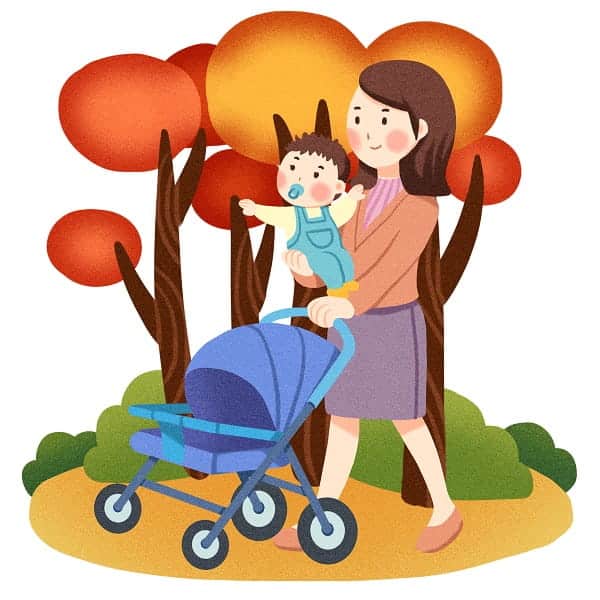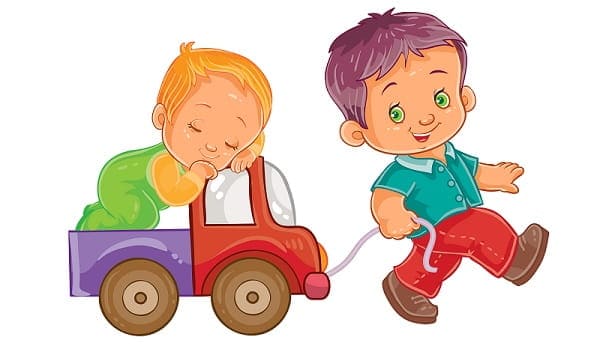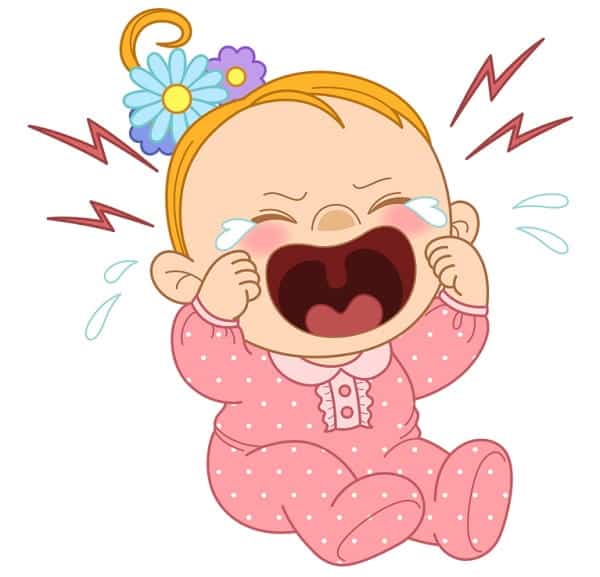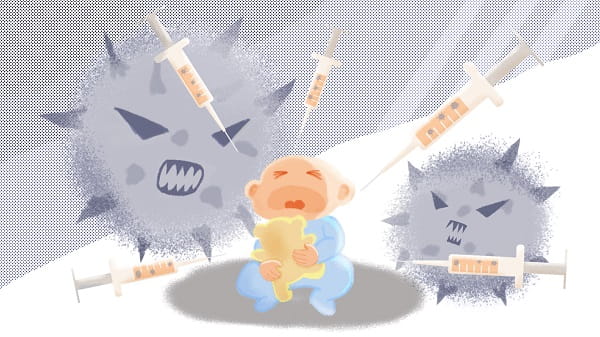Time just keeps flying. Two months have passed from the last time we were writing and it seems like the whole year is behind us. New words, moving, expressing her will, dreaded vaccination… Well, let’s dig in and find out what to expect from a toddler in the first two months of the second year.
Article Contents
1. Moving… On all four legs2. Let’s Stroll, Slide And Playground!
3. Social interactions and parallel play
4. Tantrums already?
5. Yet another vaccination
We are starting here with the first two months of the second year of a child’s life. If you want to read how did the first year go, you can find it in the first year of a child’s life section. If you’re at the start of being a parent, or you are preparing to become one, we definitely recommend starting with the first month of newborn’s life.
Moving… On all four legs
So our little one decided not to walk yet. What’s the rush she says. She can stand on her two feet, sometimes even without holding, but that’s just not that interesting. She is happiest when she is back to her all four and sprints all around: grass, mud, sand, stones… Nothing can stop her. In her crawling.
To be honest, we did expect her to walk for a few months now but we were wrong. That sometimes bother us, especially looking at other kids her age. I must admit we do subtly encourage her to stand on her feet. Sometimes even more than we should. But then we remember. We, as parents, shouldn’t feel pressure just because many other children that age already walk. It all comes down to individual differences in child development. And there are a lot of them. We try to remind ourselves that as long as she moves and is active, it is all normal. She just finds more convenient (and faster) to crawl than to walk. She will get there when she is ready, at her own pace.
The point of this is to remind you too, that comparing your child to other children is not practical or beneficial. Although it is hard to avoid, we should remember that differences are really big at that age and it doesn’t matter if X child already does Y and your child doesn’t. We can do more damage by pressuring a child into something that it isn’t ready for. We should remind ourselves about that from time to time.
Oh yes, and shoes. We bought great shoes. But no! Don’t come near with that to my feet! I will show them, take them, play with them, try to put them alone (although unsuccessfully), but don’t you dare to try to put them on my feet! – So we are still in socks. And not all socks can go on feet too! Just some. That girl really has some attitude.
Let’s Stroll, Slide And Playground!
You may remember how we talked about having issues with riding in the stroller and could only go out in the baby carrier. Well, we are happy to say that we love stroller again! With the beginning of the thirteenth month, we are again found of our four wheels, mama and dada powered transport. We still carry the baby carrier with us all the times (some bad trauma) but rarely need to use it. She just loves to go outside, and points the finger at the door going “Brm Brm” – that is how she refers to her stroller.
Also “Brm Brm” can be the car seat too, and when she sees it, she goes nuts and wants to sit in her car seat. A person would think that riding in a car is her favorite activity in the whole world. But after 10 minutes in a car, screaming, and crying starts. She wants out! But don’t show her that car seat, she will again want to go, until you start the car. Then screaming again. And every time the same story.
Enough with the wheels. We found our new favorite thing – the playgrounds! (The reason why she loves to be outside that much.) So the baby stroller’s only function is to take us to the playground. And the rain is our biggest enemy now since staying in a house is not an option. And on the playground, the slider is the best thing ever invented! Although she is still not walking, that doesn’t stop her to climb the stairs to the top of the slider, go down, rinse and repeat. And she could do it all day I think. I get tired from just watching her but her energy seems to never go away.
Exploring the playground alone is also not uncommon to her. She will go around, picking stones, going from swing to teeter-totter, grass, mud, under the wheel of the passing bicycle… Nothing can stop her so she’s keeping us on our toes all the time. She discovered the function of the trash cans and likes to throw garbage inside. Very eco-friendly indeed. But when we don’t have any paper or tissues of our own, she looks for the garbage on the floor. Yikes! Cigaret leftovers, for example, are super interesting. And it seems like some people just love to throw them all around the kid’s playgrounds 🙁 So, suffice to say, it’s never boring.
Social interactions and parallel play
With all that outing, it is inevitable to meet some other children and enter some social interactions. And that is a sight to be seen!
At first, our little one took a more cautious approach. She wanted to go among the people and other children but keep her distance. Observing. If someone would approach her, she would go to the safety of “mama” or “dada” hands. But as time passed, she became more accustomed (I guess those observations did have some function) to other children and started some interactions. I will never forget one of her first interactions with a peer: They were sitting next to each other half meter apart. They were watching each other. Then the little boy reached with his finger. She reached with her finger and they touched! And that was it, they went their own way.
We already mentioned parallel play in an article about twelve months old and we talked about how toddlers still don’t engage in joint playing. They will sit next to each order, play with the same toys but mostly never engage in the activity together. Except when one toddler wants the toy that other is using. But that mostly ends up badly.
But that doesn’t mean parallel play doesn’t have its purpose. Through it, toddlers learn some social skills, they learn how not everything can be how they imagine. Other children are not moms and dads to fulfill all our wishes. Also, through watching other children, they pick up new behaviors and skills since they are in the phase of imitating other people in their surroundings. So spending the time next to other children is beneficial, since they will get used to being among other people, especially peers with whom they may develop deeper friendships as they get older.
Tantrums already?
We all heard about the terrible twos. The period when your sweet and reasonable child turns into something…else.
But turns out the “two” part is a lie! Or at least not totally accurate. You see, they can start around one year and last till around 4. Yikes! Little princess turned into emotional rollercoaster practically overnight and we were not prepared.
Loud crying and protesting when something didn’t go as she imagined, became everyday occurrences. And she can imagine a lot! No, no, no! Seems that is her favorite word now, accompanied with the furious head shaking and little hands in fists.
Deep breaths. This is normal. This means she is acquiring new skills. I’m reminding myself that, even though sometimes I would like to join in screaming. Or hide under the bed.
Toddlers are living in the present. They don’t understand the concept of time. Tomorrow, in 5 minutes and never are all the same to them. All these words mean “not right away” and that is so frustrating! And not only that, but they can’t even express themselves clearly. Words are still hard, so they are screaming, yelling, even hitting and biting. Especially if hungry, tired or overstimulated.
Emotions are there, strong and overwhelming. But self-regulation is something you learn by living in society. Observing others, especially your parents and siblings is one way you learn. Seeing the consequences of your actions is another. Talking about our feelings and behaviors is crucial. No emotion is bad and children shouldn’t be punished or shamed for them. We often tell children not to be sad or angry because we don’t feel comfortable with those emotions. Maybe we learned to bottle them up ourselves. But they have their purpose and are needed in some situations. They show us we care about something and help us take the action.
But those actions can be vastly different. Will we hit someone in anger or calmly, but assertively say that their behavior bothers us? Bite another child because it took our toy, or ask it back? Like with any skill, learning this takes time and practice.
We are getting there. Talking a lot about emotions in short, simple sentences. “You are angry. You want to go to the slider. I understand. We can’t go now because we need to hurry to the store. On the way back we will stop.”
Yes, the child won’t understand everything. Some of our words are still just noise to them. But they are important. The tone and your calm behavior will be much bigger ponder. But they will see that you understand what they want. And being heard is one of the most basic human needs. Toddlers included. Make sure you keep your promises though. If you said you will stop on the way back, really do it. It’s important, even if you think your child can’t understand you. We really underestimate them and you would probably be surprised by how much they can pick up.
Tantrums and emotional regulation are so important (and evergreen!) topic, that we wrote the whole article about them. So be sure to check out Challenges of being a parent – Temper tantrums if you are interested in more.
Yet another vaccination
One year! With this huge milestones, comes the time for the dreaded MMR vaccine. MMR stands for measles, mumps, and rubella, very dangerous diseases, although now mostly things of the past. Or are they? Recently, as you probably know, measles started to make their comeback. Anti Vaccination movement is getting stronger and diseases which we thought long gone are back again. Even though the link to autism has been debunked in numerous studies, parents fear. And I can understand and empathize. I was scared and worried days before vaccination and on the lookout for symptoms weeks after. Wasn’t worried about autism, but there are some pretty serious, although rare possible side effects. Even though they are rare, you keep thinking what if my child is in that 0.1%. And we deserve some reassurance or at least a sympathetic ear.
It’s true that more children are dying because they or other children around them are not vaccinated. Babies younger than a year and other immunocompromised patients depend on a high immunization coverage (95%+) in population. That’s so-called herd immunity. And we all heard that and we know it and yet we can fear. What if. I truly believe communication is key. Medical workers should talk with parents and by that I mean really talk. “Are you worried? What do you want to know? In my practice, I saw these symptoms… Call right away if you notice something. “ Wouldn’t that make you feel better? Heard? I know it would. Some people and groups are using this lack of support to spread false information and scare parents even more. But remember, knowledge is power. Ask, read, find out. There are groups both in person and online where medical personnel works hard to debunk false vaccination claims and answer our worried questions.
The most common side effects, as with every vaccination, are low-grade fever, rash and swelling on vaccination spot. The interesting thing though is that symptoms occur 7 to 12 days after vaccination. Thankfully, we had no side effect whatsoever. But I know that the next vaccination won’t be easier. We are parents, we always worry. But we also must think and act in the best interest of our children and that means preventing those diseases which we can.
These are the most important things that happened in the last two months. There are countless others, day to day things that we didn’t mention. How could we? The happiness when those little arms hug you, all those moments when they want to share something with you (even if it’s the same old book again!), the realization that you are the center of their world. Those are not so easily translated to the words. But that’s what makes this parenting thing so precious. And worth remembering when we feel tired and overwhelmed, which is another daily thing. We hope you found something interesting in our experience. We have also finished with a 15. and 16. month of a toddler’s life, so be sure to check it out.
If you’re searching for some great STEM Activities for Kids and Child development tips, you’re in the right place! Check the Categories below to find the right activity for you.

STEM Science
Videos, guides and explanations about STEM Science in a step-by-step way with materials you probably already have at your home. Find new Science ideas.
Read more
STEM Technology
Videos, guides and explanations about STEM Technology in a step-by-step way with materials you probably already have at your home. Find new Technology ideas.
Read more
STEM Engineering
Videos, guides and explanations about STEM Engineering in a step-by-step way with materials you probably already have at your home. New Engineering ideas!
Read more
STEM Math
Videos, guides and explanations about STEM Math in a step-by-step way with materials you probably already have at your home. Find new Mathematics ideas.
Read more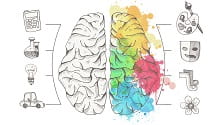
Psychology
Find out all about development psychology topics that you always wanted to know. Here are articles from child psychology and development psychology overall.
Read more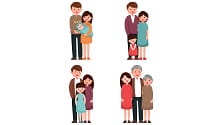
First year of Child’s Life
Following a Child’s development every month from its birth. Personal experiences and tips on how to cope with challenges that you will face in parenting.
Read more
